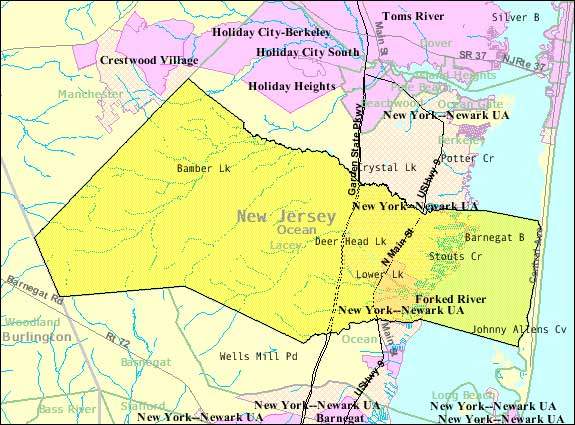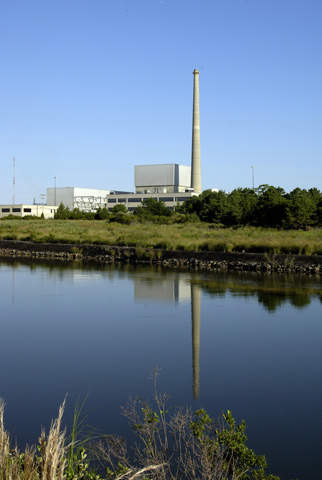Oyster Creek Generating Station (Oyster Creek) is a nuclear power plant located at Lacey Township, New Jersey Shore, US. It has been generating clean, safe and reliable power since 1969. It is the first large-scale nuclear power plant in the US and one of New Jersey’s four nuclear powerhouses.
The Oyster Creek powerhouse is owned and operated by Exelon Nuclear, a business unit of Exelon Corporation.
The operating licence of 40 years expired in 2009. The power plant submitted an application to renew its operating licence to the US Nuclear Regulatory Commission (NRC) in 2005. NRC renewed the licence in April 2009 and extended it for another two decades, so the plant will operate until 2029.
The plant operating licence number approved by the NRC is DPR-16. Oyster Creek’s environment and safety review were considered by NRC at the time of licence approval.
Conestoga-Rovers & Associates prepared a hydrogeologic investigation report (HIR) for Exelon Generation Company in 2006. A hydrogeologic investigation work plan of the company’s facility Oyster Creek Generating Station was recoded in the HIR.
Development
The Oyster Creek power plant was constructed in 1965-69.
More than $1.2bn has been reinvested by Oyster Creek to upgrade, maintain and enhance the capability of the plant for generating electricity safely and reliably.
Oyster also invested about $100m in additional projects at the Oyster Creek plant site.
A significant improvement in systems and components under a $37m expansion programme has aided Oyster Creek, and $20m was invested in security enhancement programmes.
The expansion programme included the refurbishment of low-pressure turbine rotors at a cost of $14m and installation of a new plant computer system worth $6m for monitoring reactor and steam system performance.
The programme also included the upgrading of the safety system, cooling water-piping to repair pipes identified through periodic inspections, the replacement of electric power supply cables and the addition of noble metals to the reactor coolant to inhibit corrosion. It also substituted four air compressors with more reliable, state-of-the-art units.
Oyster Creek has invested more than $20m in security upgrades so as to protect the station against potential terrorist attacks. The security upgrades encompassed the addition of more trained security guards, providing advanced vehicle barriers and guard towers, building miles of new fencing and improving the main gate guardhouse.
Plant details
The powerhouse in the 800-acre (3.2km²) site is a nuclear power plant employing a single reactor, a turbine and a generator to produce about 636MW of electrical energy.
Oyster Creek employs nuclear fuels in the generation of power. The power generation at the plant is done in three steps.
Initially, high-purity water is converted into steam by using the heat generated due to the fission of nuclear fuels. In the second stage the steam energy gets converted into mechanical energy by driving the turbine. The generator connected to the turbine converts this mechanical energy generated to electrical energy in the third stage.
The steam that escapes from the turbine is condensed using seawater from Barnegat Bay. The high-purity water is recycled and reconverted to steam at the heat source. The waste heat generated by the main condenser of the plant is removed by continuous flow of Barnegat Bay water via the circulating water system.
The system includes the intake canal from Barnegat Bay to the plant, the main condenser circulating water system, the dilution plant, the circulating water pumps and related intake structure components, and the discharge canal to Barnegat Bay.
Reactors
The powerhouse uses a boiling water reactor (BWR). BWR is a nuclear reactor used in electricity generation that was developed by the Idaho National Laboratory and General Electric during mid-1950s.
BWR utilises demineralised water (light water) as a coolant and neutron moderator.
The uranium used by the plant to generate electricity is less than other fuels, such as oil, coal and natural gas. A ton of uranium generates energy equivalent to 400,000 barrels of oil. The nuclear fuel emits no combustion products into the environment.
The nuclear fuel uranium’s pellets will be fissioned to generate the heat required to boil water. Fission is a process of converting atoms into tiny particles called neutrons. The faster the splitting takes place, the more heat is generated. Fission takes place within the nuclear reactor vessel.
Heat is produced by nuclear fission in the reactor core, and this causes the cooling water to boil, producing steam. The steam is directly used to drive a turbine, after which it is cooled in a condenser and converted back to liquid water.
Dry fuel storage is the latest technology used by the plant to store its spent fuel.
It involves storing the used fuel in strong, leak-tight stainless steel canisters. This method uses air for cooling, while the wet fuel storage method uses large pools of water.
Almost 12 nuclear plants in the US have started to use dry storage facilities since 1986. The other type of nuclear rector is a pressurised water reactor (PWR).
Local environmental impact
Oyster Creek generates power with consideration for environmental conditions, such as the air quality of Ocean County and the State of New Jersey. The plant in coastal New Jersey reduces about 7.5 million metric tons of carbon dioxide.
The replacement of Oyster Creek with a coal plant would have produced carbon emissions such as nitrogen oxide and carbon dioxide equivalent to nearly half of all the cars in New Jersey.
Oyster Creek’s hydrogeologic investigation work plan results were recorded in the HIR as part of its Fleetwide programme. CRA gathered 36 groundwater samples and three surface water samples at the station to examine tritium, strontium-89/90 and gamma-emitting radionuclides.
According to the HIR, no significant changes were observed in the concentration levels of the tritium after the examination and there was no impact of radio-nuclides releases.
The main intention of the Hydrogeologic Investigation Work Plan is to determine the concentrations and potential sources of tritium and other radionuclides in the groundwater, and to determine any radionuclides released into the groundwater.
Oyster Creek has taken measures to enhance the quality of life in Ocean County and the state of New Jersey’s environment. The plant has contributed $80,000 to the Sport Fish Fund to construct a 46-acre patch reef within the Barnegat Light Reef, located 3.5 nautical miles offshore Barnegat Lighthouse.
Oyster Creek has also purchased a $15,000 boat for the Rutgers Cooperative Extension Service Clam Restoration Project and for projects to improve the environment of New Jersey in the near future. The plant has collaborated with Drexel University to track sea turtles, which are rescued at the station.
Power market
The powerhouse supplies power to about 600,000 domestic customers in the region.
Oyster Creek is annually supplying 20% of Jersey Central Power and Light’s electricity needs and 6% of New Jersey’s total needs.
The power station also provides highly reliable, low-cost electricity to New Jersey and its surrounding regions.






